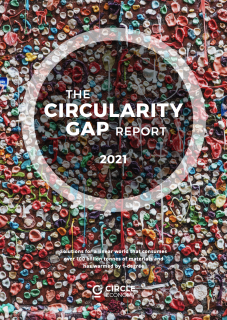
Enacted globally, a circular economy can close the Emissions Gap. This study shows that combining the twin agendas of circular economy and climate mitigation gets us on a path to a well below 2-degree world by 2032. In adopting a roadmap packed with circular strategies, we can pave the way for the systemic transformations needed to course-correct the global economy—going far beyond the limitations of current policy and national climate pledges. The current pledges bring us over 15% of the way; the circular economy delivers the other 85%. If the coming decade is the decisive one for humanity’s future on earth, then 2021 is the year to ramp up our efforts to bring our goals into realistic reach and prevent the worst effects of climate breakdown. Our current economy is only 8.6% circular, leaving a massive Circularity Gap. The good news is that we only need to close the Gap by a further 8.4%—or roughly double the current global figure of 8.6%—to get there.
